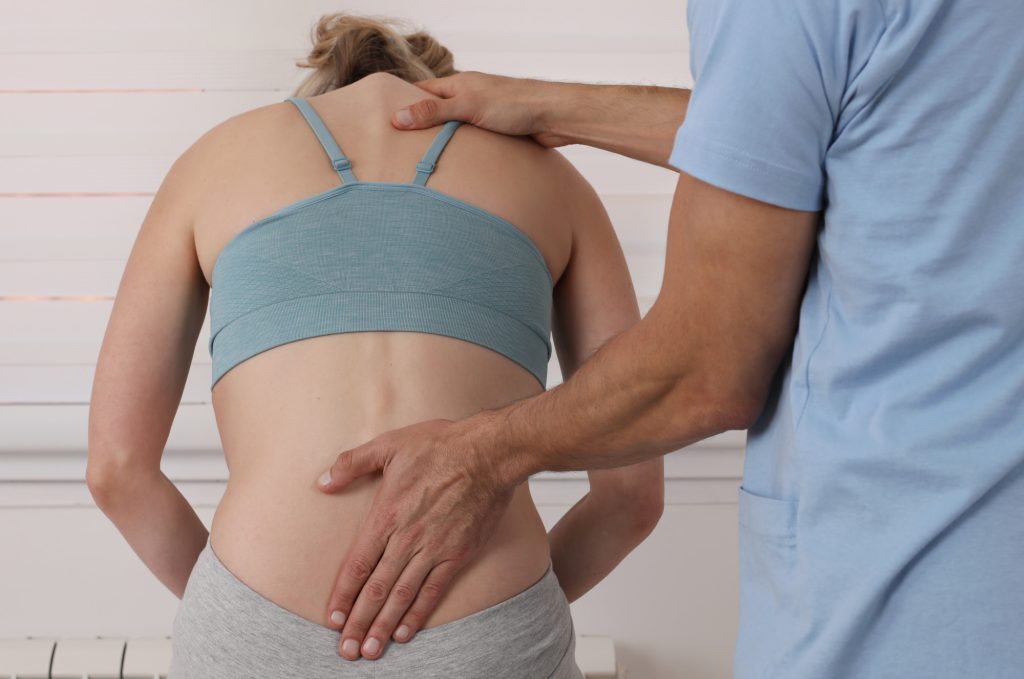Do you or someone you know suffer from scoliosis? This condition can be a source of discomfort and pain for many individuals.
Fortunately, there are several treatment options available. Such treatments help alleviate symptoms and improve quality of life. Read on as this guide will explore various scoliosis treatment options so that you can make informed decisions about your health.
Let’s get you started!
Observation and Monitoring
Observation and monitoring are often the first steps in managing scoliosis. This involves regular check-ups with a healthcare provider. This is when they will assess the progression of the condition.
During these visits, your doctor will measure your spinal curvature and monitor any changes over time. Observation is a common approach for individuals with mild scoliosis. This is because it allows for careful monitoring without intervention.
However, if the curve worsens or causes discomfort, treatment options may be recommended. Monitoring is also important for children diagnosed with scoliosis who are still growing. In these cases, doctors will closely watch their spinal development. This helps to determine if treatment is necessary.
Bracing is a Common Treatment Option
Bracing is a common treatment option for scoliosis patients. It involves wearing a device that helps to correct the curve in the spine. There are several different types of braces available. Your doctor will help you choose the one that is right for you.
The most common type of brace is called a TLSO, or thoracolumbosacral orthosis. This brace covers your torso from your underarms to your hips. It is often worn during the day and night. Another type of brace is called a Charleston bending brace. It is only worn at night while sleeping.
While bracing can be effective in slowing or stopping the progression of scoliosis, it does have some downsides. The brace can be uncomfortable to wear. Moreover, it may cause skin irritation or pressure sores if not fitted properly.
Chiropractic Care Can Help Alleviate Pain
Chiropractic care is a non-invasive treatment option for scoliosis. It is known to help alleviate pain. This type of care focuses on the spine and aims to improve its alignment. This in turn can reduce stress and tension on the surrounding muscles.
During a chiropractic session, the scoliosis chiropractor will use manual adjustments. They will perform manipulations to realign the spine. They may also use other techniques such as massage or stretching. This alleviates pain and improves mobility.
Physical Therapy Can Help Improve Posture
Physical therapy can be an effective treatment option for those with scoliosis. It involves exercises and stretches that are designed to improve:
- posture
- flexibility
- strength
The goal of physical therapy is to help the patient maintain their spine’s natural curve while also reducing pain. Physical therapists will typically design a customized plan for each patient. The plan is based on their specific needs and condition.
This may include exercises such as:
- pelvic tilts
- shoulder blade squeezes
- hamstring stretches
These exercises can help reduce muscle imbalances that contribute to poor posture. Physical therapists may use other techniques such as massage or hot/cold therapy. This helps to alleviate pain and inflammation in affected areas of the body.
Yoga Can Help Alleviate Pain
Yoga is a popular form of exercise that has been practiced for centuries. It involves various:
- poses
- stretches
- breathing techniques
These can help improve:
- flexibility
- strength
- balance
But did you know that yoga can also help alleviate the pain associated with scoliosis? One of the main benefits of practicing yoga as part of your scoliosis treatment plan is improved posture.
Many yoga poses focus on elongating the spine and strengthening the muscles in the back. This can also help improve alignment and reduce curvature.
In addition to improving posture, yoga can also help alleviate pain. This is achieved by reducing tension in tight muscles. Scoliosis often causes muscle imbalances. This is due to uneven weight distribution across the spine. It then leads to discomfort or even chronic back pain.
Surgery May Be Required
Surgery is often considered a last resort for treating your scoliosis. It is only recommended when the curvature of the spine exceeds 40 to 50 degrees. With that, it continues to worsen despite other treatment options. Surgery aims to:
- straighten the spine
- reduce pain
- prevent further progression
The most common surgical procedure used for scoliosis is spinal fusion. In this procedure, bone grafts are placed along the spine where it curves abnormally. Metal rods or screws may also be implanted. This keeps the spine in place until new bone grows between each vertebra.
While surgery can have its benefits in correcting severe scoliosis cases, there are some risks involved too. The risks may include:
- blood loss during surgery
- infection at incision sites
- nerve damage
Patients who undergo surgery for scoliosis would need postoperative care. This includes physical therapy and rehabilitation exercises. These can help strengthen their core muscles gradually over time.
While recovery can take some time with proper care and monitoring patients can regain mobility without persistent discomfort caused by their condition.
Acupuncture Can Help Alleviate Pain
Acupuncture is an ancient Chinese practice that has been used for centuries to treat various health conditions. It involves the insertion of thin needles into specific points on the body, which stimulate energy flow and promote healing. Acupuncture can be an effective treatment option for individuals with scoliosis who are experiencing pain.
The goal of acupuncture is to restore balance to the body’s energy pathways, known as meridians. When these pathways are blocked or imbalanced, it can lead to pain and discomfort. By inserting needles into specific points along these meridians, acupuncturists aim to restore balance and alleviate pain.
If you’re considering acupuncture as a treatment option for your scoliosis-related pain, it’s important to find a licensed practitioner who specializes in this form of therapy. While side effects from acupuncture are rare, it’s always best to work with someone who has undergone extensive training and follows proper safety protocols.
Understand Different Scoliosis Treatment Options
Scoliosis treatment options come with both pros and cons, and careful consideration should be taken when deciding the best option for you or your loved one. Consumers should weigh their options, consult with doctors, and seek support from others. Get started today and join a scoliosis support network!
For more informative articles, feel free to visit our blog.
James Martin is a passionate writer and the founder of OnTimeMagazines & EastLifePro. He loves to write principally about technology trends. He loves to share his opinion on what’s happening in tech around the world.



